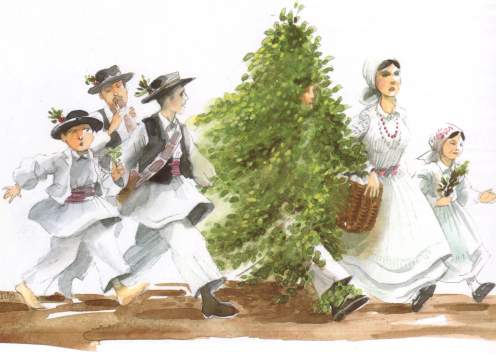
#folklorethursday Thread: Zeleni Jura (Green Yura) walking the earth. Part of Jurjevanje, celebration of the return of Jarilo, Jura, The Young Sun God who brings spring...Today performed on St George's day...Tells you a lot about the true Identity of St George... 

This ritual is performed Bela Krajina, area inhabited by descendants of Serbians who migrated here during Turkish invasions of the Balkans. Today split between Croatia/Slovenia...This is the original Green Man...
The Sun God's name Jarilo (pronounced Yareelo) comes from the root "jar" (yar) meaning: young, green (Life giving warm sun of green spring), but also brightly burning and raging, furious (Life destroying burning sun of yellow summer)...
Interestingly, in Sanskrit, har (cognate of jar, yar) can also mean green and yellow sanskritdictionary.com/?iencoding=ias…
• • •
Missing some Tweet in this thread? You can try to
force a refresh



















